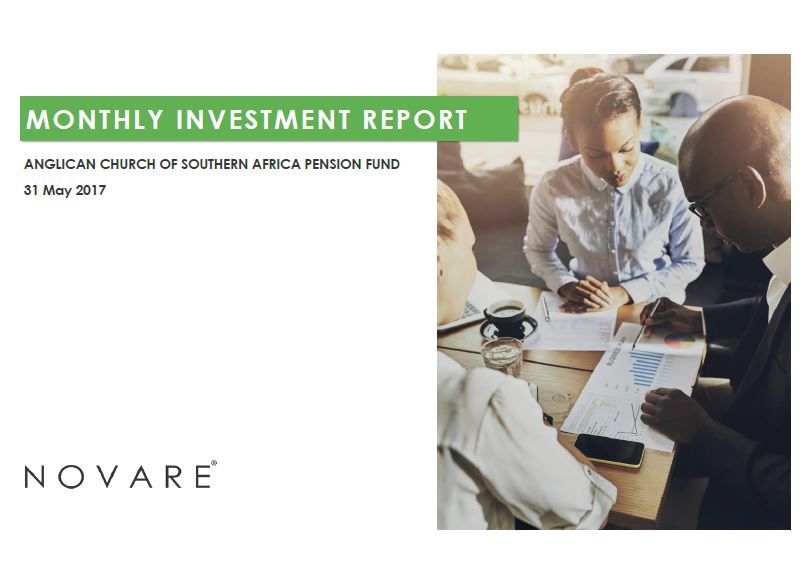 |
Anglican Church of Southern African
|
|
|
Monthly Investment Report - Retirement Fund

|
June 2017
As widely expected, Fitch Ratings erred on the side of caution and affirmed South Africa's sovereign long-term foreign currency and local currency credit ratings at BB+ with a stable outlook. In addition, S&P Global also affirmed the country's long-term foreign currency sovereign rating at BB+ and the local currency rating at BBB- with the outlook for both remaining negative. South Africa narrowly escaped a junk status credit rating from Moody's as the agency cut the country's foreign and local-currency ratings to one notch above speculative grade while keeping the outlook negative. Weakening institutions, reduced growth prospects and subsequent risks to the country's finances were all reasons highlighted by the agency. South Africa's GDP growth rate decreased 0.7% in the first quarter of this year (on a quarter-on-quarter basis) making it the second consecutive quarter where the country recorded negative growth, indicating that the economy was formally in a recession over the turn of the year. Year-on-year, real GDP was up 1% in the first quarter of the year.
The release of South Africa's revised mining charter raised questions among various stakeholders regarding the sustainability of the mining industry. Rating agencies heeded warnings that the proposed regulation would lead to increased costs, lower cash flow generation and ultimately deter investment. This subsequently raised the concern that the government may be putting the much-needed transformation agenda ahead of the country's economic growth. The rand gained 0.09% against the U.S. dollar for the month but remained volatile due to political and economic developments. The Public Protector's suggestion for the constitution to be changed in order to alter the primary objective of the South African Reserve Bank (SARB) triggered alarms regarding the independence of the SARB. The suggestion was perceived as credit negative by rating agencies.When the news broke it sent the rand and bonds higher with the rand managing to break through the R13.00 level against the greenback for the first
time since the 1st of June 2017.
Talk regarding the pullback of stimulus by major central banks was felt in the market for several days, placing emerging market assets and bonds both on the back foot. In addition, U.S. GDP growth for Q1 2017 was stronger than expected with the print sending the local unit back to above the R13.00 mark against the U.S. dollar. This combination of factors caused bonds yields to rise steeply in the final week of June as the S.A. 10-year ticked up from 8.4% to 8.7%. The less than supportive global backdrop and political uncertainty resulted in local bonds ending the month in the red, with the All Bond Index down 0.9% despite a rally in the first half of the month. Local equities performed the worst with the JSE All Share Index shedding 3.4%. On a sector basis, the Financial 15 and the Resource 20 Index both slipped by more than 2%, while the Industrial 25 Index was the biggest laggard,down 4.1% for the month. Cash and the S.A. Listed Property Index managed to finish in the green returning 0.6% and 0.2% respectively.
| |
|
|

